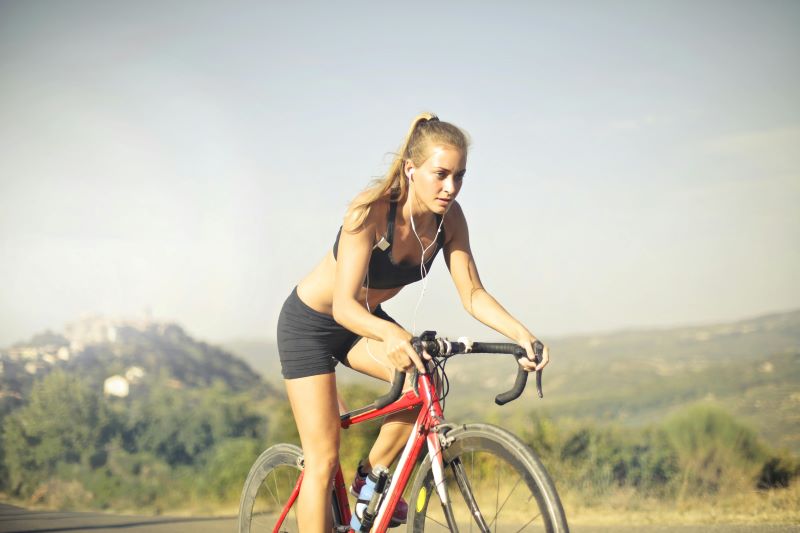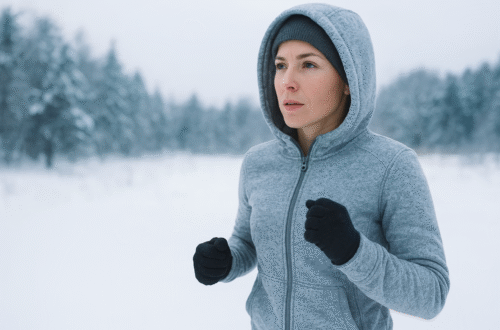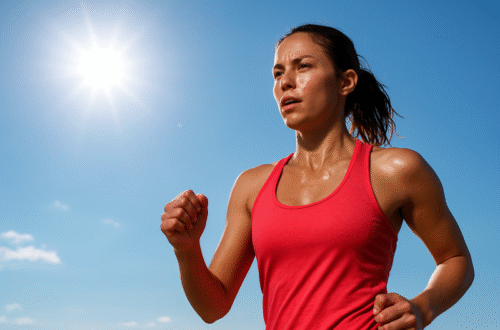Cycling is a great cardiovascular exercise due to its health perks, ease, and less impact on the environment. In addition to improving your breathing, cycling works out many parts of your body. A good bike ride in the city, on hills, or in a class helps develop a variety of muscles that improve not only your strength and endurance, but also your fitness. In this article, we will explore what muscles does cycling work, from head to toe. Understanding how the muscles work when cycling can guide you toward successful workouts and prevent experiencing injuries.
Quadriceps: The Power Behind Every Pedal
The quadriceps are certainly the most used muscles while you cycle. Your quads always work hard when you press the downward pedal. They supply the energy for moving forward and are most active when you push on the pedals. Cycling on a regular basis strengthens the quads and helps prevent injuries by improving both your endurance and speed. Whenever your quads feel tight after a long ride, this usually means they are appreciating the exercise.
Hamstrings: Supporting the Pull
Your quadriceps lead the push during pedaling, but it is the HAMSTRINGS on the back of your THIGH that are mainly involved in the pull. When rising and pressing backward on the cycle, your hamstrings tighten, assisting you to finish the movement easily. When the quads and hamstrings are trained evenly, you can pedal smoothly without risking injuries. Part of a cyclist’s routine usually involves stretching the hamstrings and strengthening them.
Gluteal Muscles: The Hidden Powerhouse
The body’s glutes contain the gluteus maximus, medius and minimus muscles. They give us support, power and help us move forward or climb up an incline. Focusing on using your glutes can result in better cycling performance. In section one, where you push on the pedals and increase pressure, your glutes will start to lead the effort along with your other leg muscles. Proper back alignment and posture are provided by having strong glutes.
Calvas: The Stabilizers of Motion
The ankle is stabilized during cycling through the action of the gastrocnemius and SOLEUS muscles in the calf. While not the main source of power, calves enable the foot to move during each pedal stroke. If you are faced with resistance or going uphill, your calves will be active to a larger degree. After regular practice, cyclists may see that their calves have become stronger and more defined. Ensuring your cleats are placed right and learning the correct pedaling technique can help your calf muscles and lower the possibility of stress on them.
Core Muscles: The Center of Balance and Control
Many people overlook the importance of core muscles when cycling, but they play a vital role in maintaining stability, posture, and efficiency. The core includes the rectus abdominis, obliques, and lower back muscles, all of which work to keep you upright and balanced on the bike. A strong core reduces unnecessary upper body movement, allowing more energy to be directed to the legs. Additionally, a stable core minimizes the risk of lower back pain, a common complaint among cyclists who ignore core training. Understanding what muscles does cycling work can help you target these key areas for better performance and injury prevention.
Also Read: https://stylevarient.com/how-to-use-a-sauna/
Hip Flexors: The Unsung Heroes of Mobility
Situated at the front of the pelvis and upper thigh, hip flexors are engaged each time you lift your leg during a pedal stroke. These muscles are responsible for bringing your knees toward your chest and play a crucial role in maintaining an efficient cycling rhythm. Tight hip flexors, often caused by prolonged sitting or lack of stretching, can lead to poor posture and reduced cycling performance. Regular stretching and foam rolling can keep these muscles supple and functional.
Upper Body Muscles: More Involved Than You Think
While cycling is primarily a lower-body workout, your upper body muscles are far from passive. The biceps, triceps, shoulders, and upper back muscles work to support your body and stabilize the handlebars. In mountain biking or aggressive road cycling, the upper body plays a greater role, helping you absorb shocks, maintain control, and shift your weight. Core and upper body strength also enhance breathing efficiency and posture, making your overall ride more effective and comfortable.
Conclusion
Riding a bicycle works many parts of the body and not only your legs. With cycling, your legs are the main worker, the core helps hold you steady and your upper body helps you keep your balance. Being aware of the muscles involved in an exercise can assist you in creating a good fitness plan and protecting yourself from injuries. If you enjoy cycling for sports, exercise or only as a hobby, it works to help you get stronger, more flexible and increase your stamina all at the same time.
FAQs
Is cycling enough to build muscle?
Cycling can help build muscle, especially in the legs and glutes, but it’s primarily an endurance exercise. For significant muscle growth, combine cycling with resistance training targeting the major muscle groups.
Does cycling tone your body?
Yes, cycling helps tone and sculpt your body by engaging multiple muscle groups, particularly in the legs, core, and glutes. With consistent practice, you’ll notice increased muscle definition and improved body composition.
Can cycling replace leg day at the gym?
Cycling is a great cardiovascular and endurance workout for the legs, but it doesn’t fully replace strength training. To build balanced leg strength, it’s recommended to incorporate resistance exercises like squats and lunges alongside cycling.





